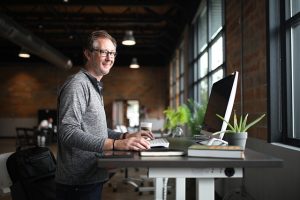By Antonio Nuño, Co-founder & CEO of Someone Somewhere
More than 300 million people depend on the artisan activity as their main source of income, making it the second-largest global employer for people living in poverty. Most of them are women, and according to various sources (Eg: the World Bank and Bill Gates) empowering rural women may be the key to a brighter future for all of us.
1 out of every 25 people in the world is a struggling artisan, but despite being able to create amazing products, full of color, cultural value and functionality, 70% of them live below the poverty line. Consumers in developed countries are buying more products than ever, but millions of people are not being able to benefit from this market. Why is this happening?
At Someone Somewhere, we believe that the root cause is the lack of efficient connections between the rural communities and most urban-based consumers. The artisan industry hasn’t changed in more than 100 years, so most artisan-made products are no longer matching today’s market needs. The time and craftsmanship they put into each piece are not recognized for their potential value. Their designs usually end up as souvenirs, and most artisans rely on a few tourists going to their communities as the only way to make a few bucks.
We are combining traditional artisan techniques with contemporary materials, designs and sales channels, and it seems to be working. Since the pandemic hit we have generated more than 50,000 hours of work for rural families, and every few months we are doubling the number of visitors on our site. Now we are even closer to connecting thousands of talented artisans with new consumers, thanks to our launch in the US (a market that is 200 times bigger than Mexico’s, where we started).
The right kind of retail can unlock better lives for millions of people. Most people believe that working with rural families is really difficult because they live in remote places and are too informal to become part of global supply chains, but this couldn’t be further from the truth. We are producing thousands of products every month in communities that don’t even have internet in some cases, yet we are having less than 2% of defectives in each batch.. Anyone involved in the fashion supply chain knows that this is outstanding.
So if you are wondering how you can have an impact through your retail brand, the artisan industry may be the most elegant and powerful solution. It just takes a little courage, and the will to spend some time with some of the most generous and hardworking people you will ever meet. And if you are wondering what the combination of these two worlds looks like in real-life, visit someonesomewhere.com and become part of this adventure.
About the author
 entrepreneurship, working with NGOs and corporations across the globe (eg: McKinsey & Co) before co-founding Someone Somewhere. With Someone Somewhere, he has been able to leverage his passion for social sectors and combine it with his business talents – he deeply believes in the purpose he and his team are fighting for. Antonio has been honored with Forbes 30 Under 30, Pitch@Palace LATAM, Gifted Citizen and many other awards that prove his ambition for social causes.
entrepreneurship, working with NGOs and corporations across the globe (eg: McKinsey & Co) before co-founding Someone Somewhere. With Someone Somewhere, he has been able to leverage his passion for social sectors and combine it with his business talents – he deeply believes in the purpose he and his team are fighting for. Antonio has been honored with Forbes 30 Under 30, Pitch@Palace LATAM, Gifted Citizen and many other awards that prove his ambition for social causes.The concept was developed by a group of 3 Latinx best friends (Antonio Nuno, Fatima Alvarez, Enrique Rodriguez – all under the age of 30), who were taken back with what they experienced while on volunteer trips to rural communities in high school. The founders lived with artisans for months before formulating an efficient and flexible supply chain that allowed artisans to work from home.
In 2016, Someone Somewhere launched with a Kickstarter campaign with t-shirts and backpacks and hit their 50k goal within just two days – receiving orders from 27 countries including Japan, India, New Zealand, Finland, and more. They had to shut it down because they reached the maximum number of units they could produce at the time (there were a few hours that orders exceeded one per minute ). They had only eight artisans on board upon launch but expanded to more than 50 artisans by the time the campaign ended.
Related Articles

The Rise of Digital Experience Platforms (DXPs) in Software Development
Software development is evolving, as Digital Experience Platforms enable the delivery of a personalised digital cross-channel experience. A DXP delivers integrated content, Artificial Intelligence, and low-code rapid application development tools. It streamlines the work of developers as well as marketers.

7 Employee Benefits That Can Help Your Business Increase Staff Retention
With so many businesses vying for the attention of skilled job candidates, it’s becoming more important to look for ways to make your offerings more appealing by adding unique perks that not every employer does.

How Retailers Can Prepare for the Summer 2025 Shift
Rather than focusing on isolated touchpoints or departmental KPIs, journey management provides a way to understand where the most critical pain points lie and how to resolve them systematically across the business.

Retailers Are Drowning in Data – Journey Management Could Be the Lifeline
Rather than focusing on isolated touchpoints or departmental KPIs, journey management provides a way to understand where the most critical pain points lie and how to resolve them systematically across the business.



 for the latest news and job opportunities in retail tech
for the latest news and job opportunities in retail tech 